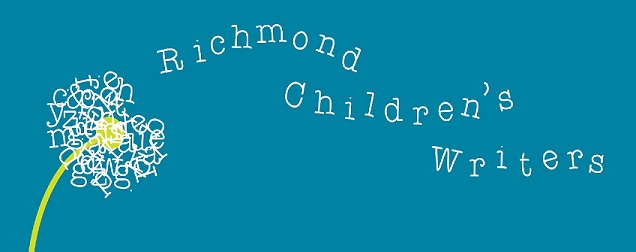
Richmond Children’s Writers: Amanda, thanks for sharing your insights with our blog readers. Thanks also for writing a YA novel that doesn’t feature vampires or zombies!
What was your inspiration for
What You Keep Is Not Always What Will Stay?
Amanda Cockrell:
It started out because I thought that sainthood might take a person by surprise, so to speak. And all the various wars had been on my mind, and I thought the saint might have some battle scars of his own.
RCW: I couldn’t help but notice some similarities between the book’s main character and yourself. Both have writer parents, a California childhood, and similar physical traits. How much of you is in this book?
AC: Angie is a much more together teen than I ever was. But I did draw on my own adolescence for the setting, and for her parents to a limited extent. The book is kind of a love letter to Ojai, California, the town I grew up in. It was a wonderful place. I could ride my horse all over the valley and there was a hitching post outside the town library. Still is. I called it Ayala instead of Ojai so I could change things – like keeping the church in use. It’s actually a museum now.
RCW: You do a wonderful job bringing both your adult and teen characters to life in this book. How do you manage to create realistic teen dialogue?
AC: I think the key is to listen to people talk, and not to try to be too trendy. For one thing, you’ll get the slang wrong and look like a goon, and if you don’t get it wrong it will be dated in a few years anyway.
RCW: Your adult characters are supportive of your teen heroine, but they don’t solve problems for her. They are loving, but also flawed. What advice would you give aspiring novelists about the role of adult characters in YA novels?
AC: The adolescent has to solve her/his own problem, to the extent that she can. Otherwise it’s not her story. But adults are there – they are a part of any teen’s life, and the way that teen interacts with those adults is going to be important. I think it’s a mistake to just leave them out. Some things I read, I find myself thinking, where are this kid’s parents? And the adult characters need to be as well developed as the adolescent ones. Using Generic Mom and Generic Dad is wasting characters that could make your story richer.
RCW: Han Nolan praised What You Keep Is Not Always What Will Stay for its “deft use of magical realism.” I would say that your story is more “spiritual realism,” with references to Christianity, Judaism, Kabbalah, and reincarnation. Is there a spiritual lesson you wished to convey with this story? Or did you just want to introduce general concepts to teenage readers?
AC: I wasn’t really trying to introduce anyone to any particular concepts – they were just part of the story. But I do think any teen thinks about those things and wonders what in heaven or earth is going on. I do think it’s a good idea to see the connectedness between faiths and in that sense I like Angie’s family because they manage to do that successfully.
In any case, as Ursula K. LeGuin said so well, “I don’t speak message, I speak story.” What the reader takes from your story will differ with the reader and that’s as it should be. Tell your story and don’t try to teach anything. What we learn from story is subtle and can’t be forced.
Personally, I kind of subscribe to Helen’s idea that the theoretical ends of theology and physics get closer together all the time.
RCW: Did you gain any new insights in creating these diverse characters and watching their stories unfold on your pages?
AC: I learned, as I do with every story I write, that they will go their own way and be their own people, and you had better let them. I always like to get in the heads of my difficult characters. It gives me a sense that even unpleasant people may be doing the best they can. You don’t have to like your difficult characters but you do have to understand them.

RCW: In your story you talk about “shared dreams,” is there really such a thing? If so what research did you do in this area?
AC: I did some research on dreaming. There have been some experiments done on lucid dreaming (knowing you’re dreaming as you dream and being able to influence the dream) and people dreaming the same dream (at the same time, which apparently does occasionally happen) and this is what Helen is talking about. There is no record of anyone having someone else’s recurring dreams, the way Angie does though. Google “shared dreams” and you’ll find some interesting stuff.
RCW: A lot of times a story can take on a life of its own. Were there any moments when your characters surprised you as the story evolved?
AC: Well, Lily (Angie’s best friend) turned out to be gay. She just was. I didn’t change her character at all, but we took that revelation out because my editor thought there were too many subplots.
RCW: Many of our readers are aspiring writers. Could you share with them how you secured your contract with Flux? Was it a conference connection or through an agent?
AC: it was through an agent, but I also know another writer who got a contract with Flux just over the transom, so it can still happen that way too.
RCW: How long did the revision/editing process take once you’d completed the first draft?
AC: Arrgh. Forever.
A friend had me send it to her editor, who liked it sort of, but wanted revisions. I made them. She wanted more... I made those, some of them reluctantly as they took out some of the magical realist element. Then her publishing house was bought by another house and the whole project just fell out of her sights. Then I sent it to Sarah Davies at The Greenhouse Literary Agency.
Sarah asked for revisions, some of which added back the magical realist things that the editor had wanted changed, which pleased me. But the main thing was in strengthening Angie’s relationship with Jesse and I blew it. I think I just didn’t want to put her through all that. So I revised, and not very well, and she turned it down. Long thoughtful period of thinking about not having been willing to tackle the tough stuff. Contrite plea for one more chance. Gracious permission. Five months of taking the entire middle apart and rewriting it. Then my editor at Flux wanted some revisions as well, but they weren’t huge. Sarah had been right in making me get it in the best possible shape before it got sent out.
And if there is one thing I have learned from that experience, it is that if you get to a scene or scenes that you just don’t want to write because they make you uncomfortable, that is a sure sign that they touch on the heart of your story and you had better write them.
RCW: In addition to being a talented writer, you are also the director of a master’s program in Children’s’ Literature at Hollins University. With that double dose of insight, what advice would you give to someone starting their career writing for children? And how should someone contact Hollins to find out more about their master’s program in Children’s Literature?
AC: I would say to read in the genre you want to write – the more you read, the better.
Join SCBWI (Society of Children’s Book Writers and Illustrators, www.scbwi.org )
The more you write the better, but don’t write in a vacuum – find a creative writing class that will give you good feedback; or a writers critique group; go to SCBWI conferences and show your work to the editors and agents who do manuscript critique there; if you really want to study your craft in depth, take a look at an MA/MFA program like Hollins’.
You can find out a lot on our website:
http://www.hollins.edu/grad/childlit/childlit.htm . Once you look at that, if you are interested and have specific questions about the program, please contact me: acockrell@hollins.edu or 540-362-6024.
And I have to put in a plug for our new graduate-level Certificate in Children’s Book Illustration, for any artists reading this!
http://www.hollins.edu/grad/cbi/index.htm
























 And don't miss Michael Buckley at bbgb on Tuesday, September 27th from 3:30-5:30!
And don't miss Michael Buckley at bbgb on Tuesday, September 27th from 3:30-5:30!













